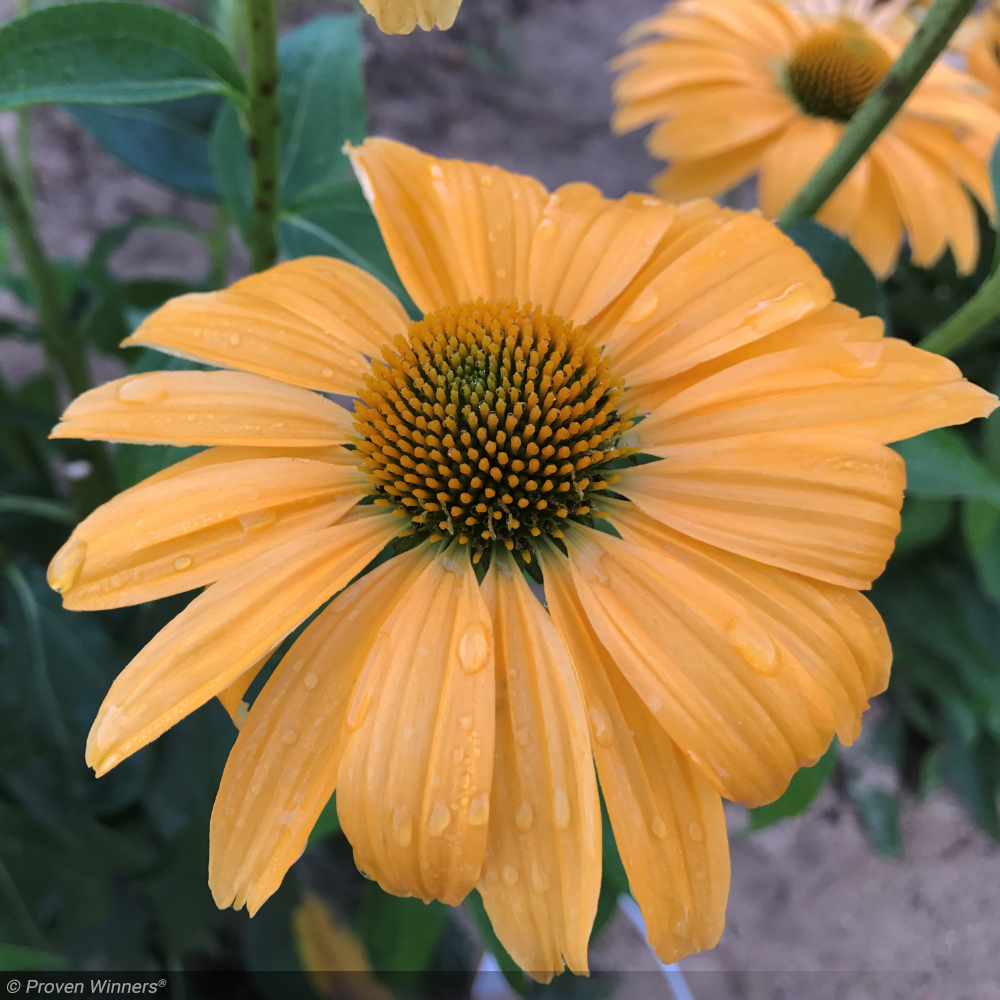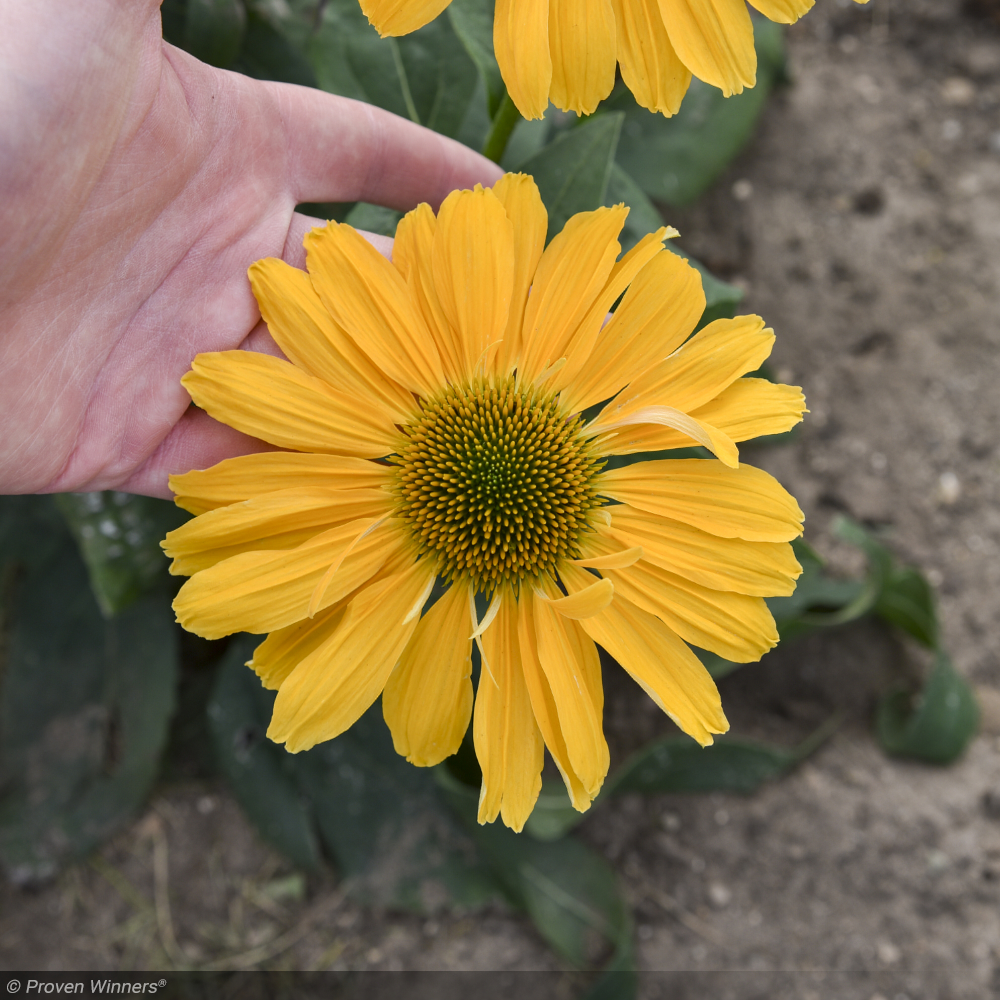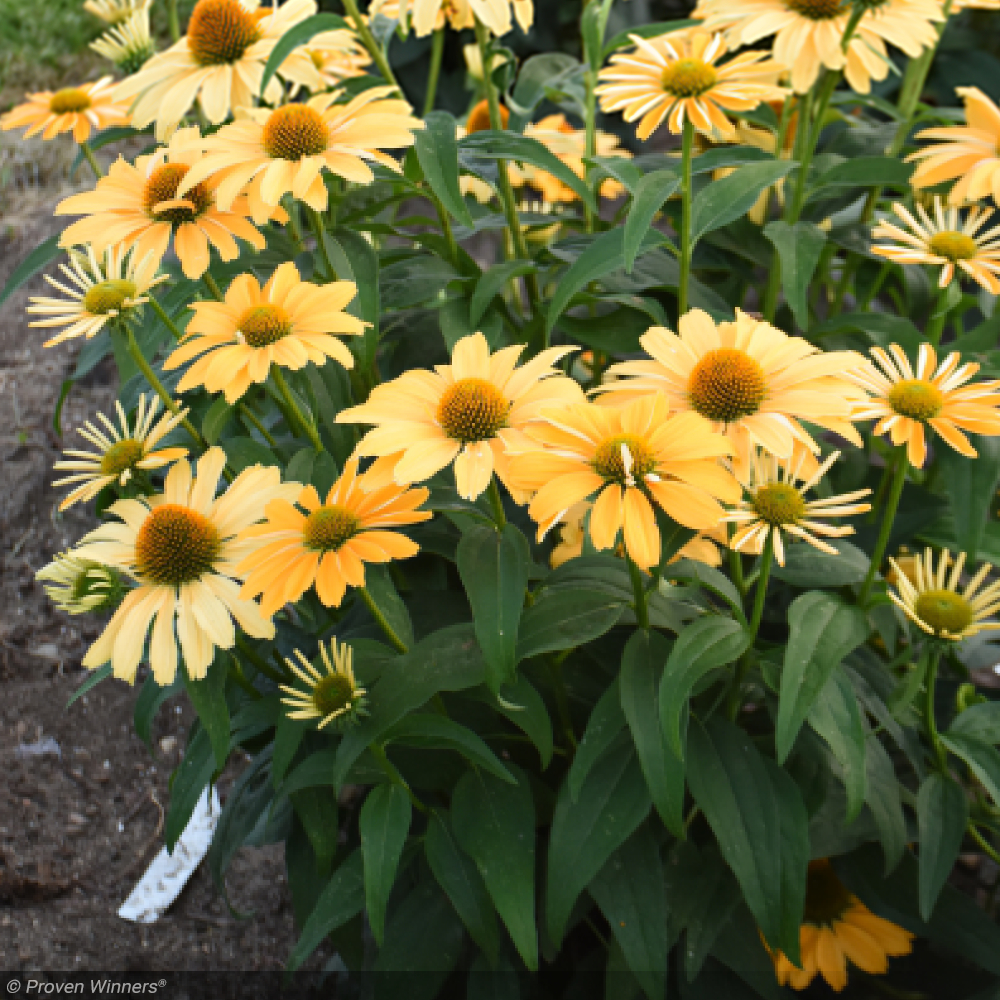All Color Coded Echinacea plants will have the same color and habit because they are generated naturally from tissue culture. These cultivars were chosen due to their outstanding basal branching, enormous bloom size, large petals, and petals held horizontally. Savor these as a late-summer garden accent. The seed heads will provide food for birds from late fall to winter, making these excellent pollinator magnets.
| Plant Type |
Perennials |
| Hardiness Zone |
4-8 |
| Exposure |
Full Sun, Partial Sun |
| Season of Interest |
Mid Summer, Late Summer, Winter |
| Height | 2' - 4' (ft) |
| Spread | 18" - 24" (in) |
| Spacing |
18" - 20" (in) |
| Water Needs |
Average |
| Maintenance |
Low |
| Soil Type |
Chalk, Clay, Loam, Sand |
| Soil PH |
Acid, Alkaline, Neutral |
| Soil Drainage |
Well-Drained |
| Characteristics |
Fragrant |
| Tolerance |
Deer |
| Attracts |
Bees, Butterflies |
| Garden Uses |
Beds and Borders, Cut Flowers, Dried Arrangements, Mass Planting, Patio and Containers |
Color Coded 'One in a Melon' Coneflower | Echinacea hybrid || All Color Coded Echinacea plants will have the same color and habit because they are generated naturally from tissue culture. These cultivars were chosen due to their outstanding basal branching, enormous bloom size, large petals, and petals held horizontally. Savor these as a late-summer garden accent. The seed heads will provide food for birds from late fall to winter, making these excellent pollinator magnets.
Full Sun, Partial Sun,
Mid Summer, Late Summer, Winter,
Average Water Needs, Low Maintenance, Well-Drained,
Fragrant,
Deer Tolerant,
Attracts Bees, Attracts Butterflies, Beds and Borders, Cut Flowers, Dried Arrangements, Mass Planting, Patio and Containers




